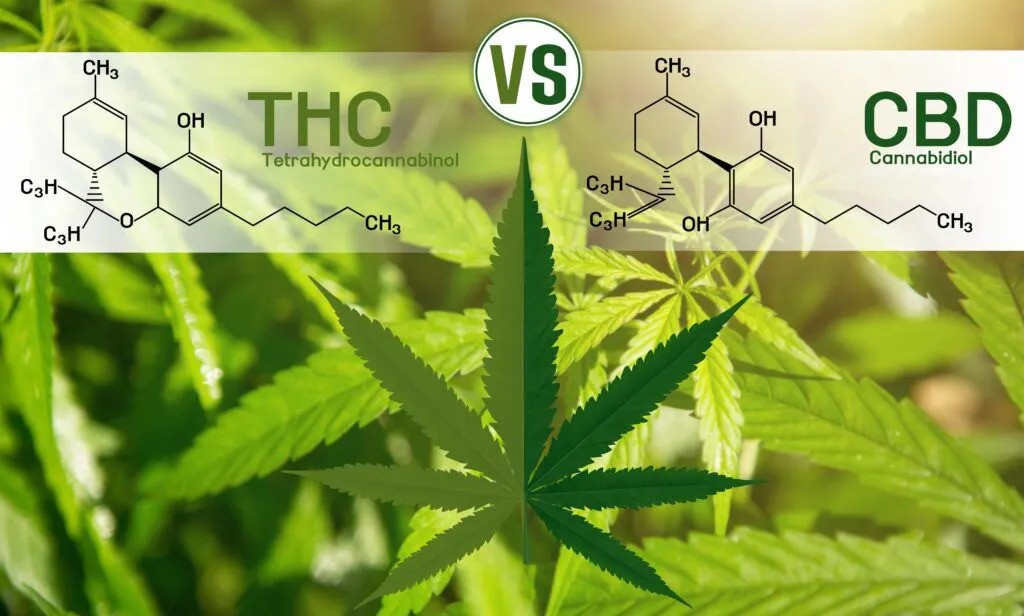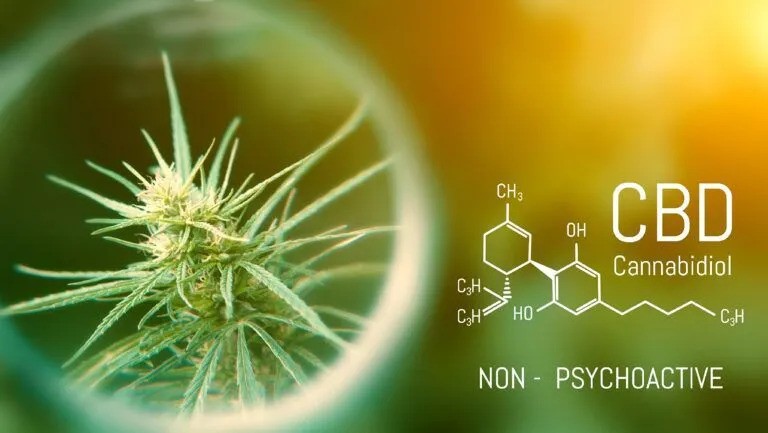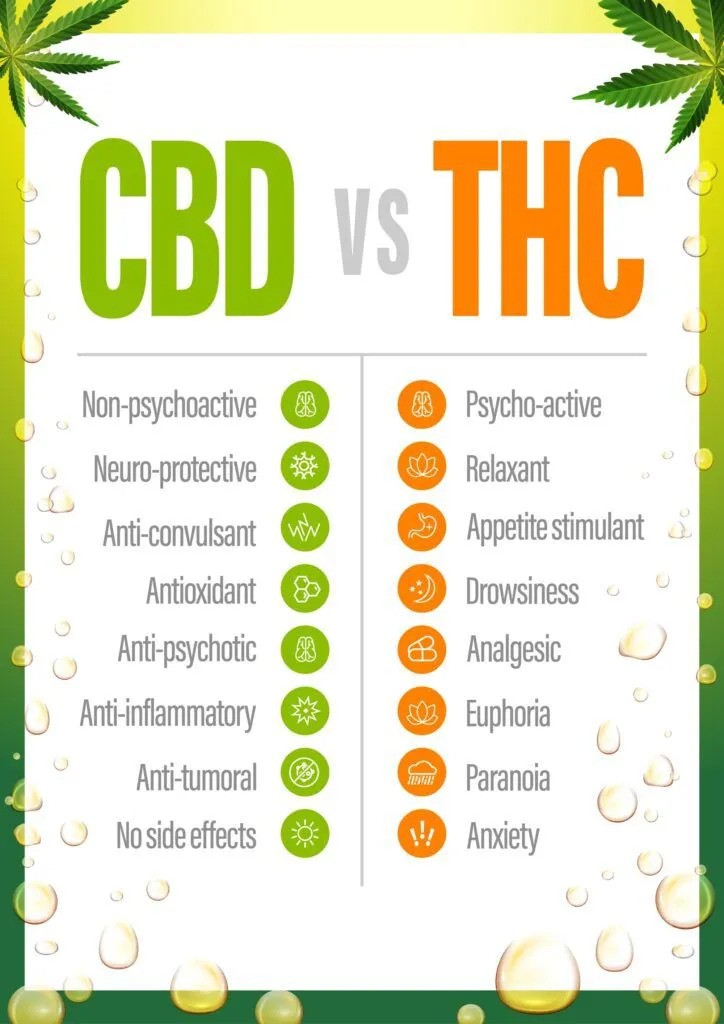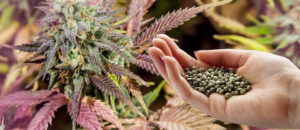CBD vs. THC: Understanding the Differences and Benefits
10 Jan 2024

The acceptance and recognition of medical marijuana are on the rise, prompting a need to understand the distinctions between its primary components: tetrahydrocannabinol (THC) and cannabidiol (CBD). By delving into the unique properties and therapeutic potentials of THC and CBD, we can navigate the world of medical cannabis more effectively and make informed decisions about its use. This blog aims to shed light on the differences between THC and CBD, providing insights into their effects on the body, their potential medical applications, and the importance of considering their individual characteristics when exploring the world of medical marijuana. Understanding these differences will empower individuals to make educated choices in leveraging the medical potential of cannabis.
What is Medical Marijuana?
Medical marijuana refers to the use of cannabis or its constituents, such as THC (tetrahydrocannabinol) and CBD (cannabidiol), for therapeutic purposes under the guidance of healthcare professionals. It involves the prescription or recommendation of cannabis products to alleviate symptoms, manage conditions, or improve the quality of life for patients.
Cannabis contains over 100 different compounds known as cannabinoids, which interact with the body’s endocannabinoid system. THC is the primary psychoactive compound in cannabis responsible for the “high” associated with marijuana use. CBD, on the other hand, is non-psychoactive and does not produce intoxicating effects.
Medical marijuana can be used to address a wide range of health conditions and is available in different forms. The therapeutic effects of medical marijuana can vary depending on the specific condition, the ratio of THC to CBD, the method of administration, and individual factors. The use of medical marijuana is often regulated by local laws and requires a recommendation or prescription from a healthcare professional.
It’s important to note that while medical marijuana has shown potential in treating various conditions, it is not a cure-all and may not be suitable for everyone. As with any medical treatment, consulting with healthcare professionals is crucial to determine the appropriate strain, dosage, and mode of administration based on individual circumstances and potential interactions with other medications.
THC (Tetrahydrocannabinol)
THC, short for tetrahydrocannabinol, is a naturally occurring compound found in cannabis plants. It is one of the most well-known cannabinoids and is primarily responsible for the psychoactive effects associated with marijuana use.
When THC is consumed or inhaled, it binds to cannabinoid receptors in the brain and central nervous system, particularly the CB1 receptors. This interaction alters the release of neurotransmitters, resulting in various physiological and psychological effects. The most notable effect is the euphoric “high” commonly associated with marijuana.

Apart from its psychoactive properties, THC also exhibits therapeutic potential. It can provide relief from symptoms associated with a range of medical conditions, such as chronic pain, nausea and vomiting, muscle spasms, and poor appetite. THC can stimulate appetite and reduce nausea, making it beneficial for individuals undergoing chemotherapy or suffering from conditions that result in a loss of appetite.
Moreover, THC has been studied for its analgesic properties and its potential in reducing pain and inflammation. It may also have mood-elevating effects, making it potentially useful in managing symptoms of certain mental health conditions such as depression or anxiety. However, it’s important to note that THC can also induce anxiety or paranoia in some individuals, and its effects can vary depending on dosage, strain, and individual tolerance.
THC is available in various forms, including dried flowers (commonly known as marijuana or weed), oils, edibles, and concentrates. The potency of THC in these products can vary significantly, and it’s crucial to exercise caution and adhere to recommended dosages to prevent adverse effects.
It’s worth noting that the legal status of THC differs across jurisdictions. While it is classified as a controlled substance in many places, some regions have legalized its medical or recreational use, subject to specific regulations and restrictions.
Overall, THC is a complex compound with both psychoactive and potential therapeutic properties. Its effects and benefits need to be carefully considered in relation to individual needs and under the guidance of healthcare professionals.
CBD (Cannabidiol)
CBD, short for cannabidiol, is a naturally occurring compound found in cannabis plants. Unlike THC (tetrahydrocannabinol), CBD does not produce psychoactive effects or the sensation of being “high.” It is one of the many cannabinoids present in cannabis and has gained significant attention for its potential therapeutic applications.

CBD interacts with the body’s endocannabinoid system, which plays a role in regulating various physiological processes, including pain sensation, inflammation, mood, and immune response. However, CBD does not directly bind to cannabinoid receptors like THC does. Instead, it influences these receptors indirectly, leading to a range of potential therapeutic effects.
One of the primary reasons CBD has gained popularity is its potential to alleviate symptoms associated with various medical conditions. It has shown promise in managing chronic pain, reducing inflammation, and mitigating symptoms of epilepsy and seizures. Furthermore, CBD has been explored for its potential benefits in addressing anxiety and depression. It may have anxiolytic and antidepressant effects, although further research is needed to fully understand the mechanisms involved.
CBD is available in various forms, including oils, tinctures, capsules, topicals, and edibles. It can be consumed orally, applied to the skin, or inhaled through vaporization. The dosage and method of administration may vary depending on the specific condition being treated and individual factors.
It’s important to note that CBD products can vary in quality and potency. It is advisable to purchase CBD products from reputable sources and ensure they undergo third-party testing for purity and consistency.
While CBD is generally well-tolerated, it can still cause side effects such as fatigue, dry mouth, or changes in appetite. It may also interact with certain medications, so it’s crucial to consult with a healthcare professional before incorporating CBD into your healthcare routine, especially if you are taking other medications.
CBD’s legal status varies across jurisdictions. In some regions, it is widely available, while in others, specific regulations or restrictions may apply.
In summary, CBD is a non-psychoactive compound found in cannabis with potential therapeutic properties. It offers an alternative treatment option for various conditions, but consultation with healthcare professionals is recommended to ensure safe and appropriate use.
Key Differences Between THC and CBD
The most significant distinction between THC and CBD lies in their psychoactivity. THC produces the characteristic “high” associated with marijuana use, while CBD does not induce this euphoric effect. This key difference makes CBD a more attractive option for individuals seeking relief from various symptoms without the mind-altering effects.
Moreover, THC and CBD exhibit variations in their potential medical applications. THC is often effective in managing pain, reducing nausea and vomiting, stimulating appetite, and addressing certain mental health conditions. CBD, on the other hand, has shown promise in alleviating anxiety, depression, epilepsy, and inflammation.
Another aspect to consider is the legal status of THC and CBD. While THC is still classified as a controlled substance in many jurisdictions, CBD derived from hemp plants with low THC content is often legally accessible. However, it’s essential to research and understand the specific regulations and laws in your
region.
Here’s a table comparing THC and CBD:
| Features | THC (Tetrahydrocannabinol) | CBD (Cannabidiol) |
| Psychoactive Effects | Produces a psychoactive “high” | Non-psychoactive, does not produce a “high” |
| Medical Applications | Pain relief, nausea reduction, muscle spasm control | Pain management, anxiety and depression reduction, epilepsy treatment |
| Binding to Cannabinoid Receptors | Binds directly to CB1 and CB2 receptors in the endocannabinoid system | Indirectly influences cannabinoid receptors, modulating their activity |
| Side Effects | Short-term memory impairment, anxiety, potential dependency | Generally well-tolerated, mild side effects like fatigue or dry mouth |
| Legal Status | Controlled substance in many jurisdictions | Varies across jurisdictions, legal in some places for medical or recreational use |
| Source | Found in higher concentrations in marijuana plants | Found in both marijuana and hemp plants |
| Interaction with Other Medications | May interact with certain medications | Potential for drug interactions, caution advised with concurrent use |
| Potential for Addiction | May be associated with dependency and addiction risks | Not associated with addiction or dependency |
| Research Status | Extensive research conducted | Growing body of research, ongoing exploration of potential benefits |
| Availability | Subject to legal restrictions in many areas | More widely available in various forms |
Synergistic Effects: THC, CBD, and the Entourage Effect
Research suggests that THC and CBD can work together synergistically, enhancing each other’s therapeutic effects. This phenomenon is known as the entourage effect. When used in combination, these compounds may offer a more comprehensive range of benefits than when used separately. Strains and products that contain a balanced ratio of THC to CBD can provide a unique blend of relief for specific conditions, such as chronic pain or epilepsy.
Choosing the Right Cannabis Product

Selecting the appropriate cannabis product involves considering various factors. It is essential to consult with healthcare professionals experienced in medical marijuana to determine which ratio of THC to CBD would be most beneficial for your specific needs. Additionally, understanding the available forms of medical marijuana, such as oils, tinctures, edibles, or inhalation methods, can help you find a delivery method that suits your preferences and health requirements.
In terms of neurological disorders, medical marijuana has shown great promise in mitigating symptoms of certain conditions such as epilepsy, multiple sclerosis (MS), Parkinson’s disease, and neuropathic pain. One of the primary ways medical marijuana can be used to treat symptoms of neurological disorders is through its ability to provide relief from pain. Both THC and CBD possess analgesic properties, which can help manage chronic pain associated with conditions like neuropathy or MS. These compounds interact with the body’s endocannabinoid system, which plays a role in regulating pain perception.
In the case of epilepsy, medical marijuana, particularly CBD, has gained attention for its potential anti-seizure effects. Some forms of epilepsy, such as Dravet syndrome and Lennox-Gastaut syndrome, have shown a positive response to CBD treatment, leading to a reduction in the frequency and severity of seizures.
Furthermore, medical marijuana has been explored as a potential therapy for symptoms related to movement disorders, such as Parkinson’s disease. Both THC and CBD have demonstrated neuroprotective properties, which may help mitigate motor symptoms, reduce tremors, and improve overall motor function.
In Conclusion
As the acceptance and availability of medical marijuana continues to grow, it is vital to comprehend the differences between THC and CBD. These two compounds offer distinct therapeutic benefits and side effects. While THC provides psychoactive effects and potential relief for certain conditions, CBD offers non-psychoactive benefits and broader applications. By understanding their unique properties and the entourage effect, individuals can make informed decisions about the use of medical cannabis. Remember to consult with healthcare professionals who specialize in medical marijuana to ensure safe and effective use.




